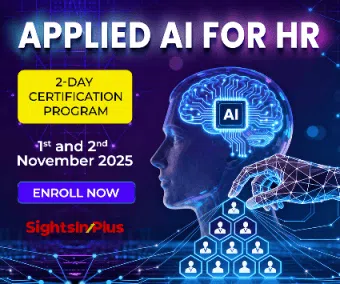A recent study by Microsoft has identified 40 occupations that are most likely to be reshaped—or in some cases, replaced—by AI-powered chatbots such as Copilot and ChatGPT.
Drawing insights from over 200,000 anonymized interactions with Microsoft’s Copilot chatbot in the United States, the research offers a granular view of how generative AI is already influencing white-collar work.
Rather than predicting job losses, the study introduces an “AI applicability score”, which measures how closely a job’s tasks align with the capabilities of AI tools.
The findings suggest that roles involving information processing, communication, and repetitive content generation are particularly vulnerable to automation.
Microsoft Study: Jobs Most Aligned with AI Capabilities
At the top of the list are interpreters and translators, with an applicability score of 0.49, followed closely by historians (0.48), passenger attendants (0.47), and service sales representatives (0.46). Other roles flagged include:
- Writers and authors (0.45)
- Customer service representatives (0.44)
- CNC tool programmers (0.44)
- Telephone operators (0.42)
- News analysts, editors, and public relations specialists
These professions often involve tasks that AI can replicate efficiently—such as summarizing data, drafting content, answering queries, and generating reports.
Why These Roles Are at Risk
The study highlights that many of the identified jobs rely heavily on language processing, structured communication, and routine digital tasks—areas where generative AI excels.
For example, chatbots can now handle customer inquiries, translate text, and even produce editorial content with increasing accuracy.
However, Microsoft researchers caution that AI tools do not fully perform any single occupation.
Instead, they support specific tasks within roles, suggesting a future where human workers collaborate with AI rather than being replaced outright.
Microsoft Study: Jobs Least Affected by AI
In contrast, occupations requiring manual labor, physical presence, or emotional care show minimal overlap with AI capabilities.
These include:
- Dredge operators
- Roofers
- Massage therapists
- Nursing assistants
- Bridge and lock tenders
Such roles demand hands-on skills, human judgment, and real-time decision-making, which current AI models are not equipped to replicate.
Implications for the Workforce
While the study avoids forecasting job losses, it underscores the need for adaptability and upskilling.
Experts suggest that workers in high-overlap roles should consider developing complementary skills—such as critical thinking, ethical reasoning, and AI oversight—to remain competitive.
Microsoft Senior Researcher Kiran Tomlinson noted, “AI supports many tasks, particularly those involving research, writing, and communication, but does not indicate it can fully perform any single occupation”.
The report also serves as a reminder that AI’s impact will vary across sectors, and that proactive workforce planning is essential to navigate the transition.
Note: We are also on WhatsApp, LinkedIn, and YouTube, to get the latest news updates. Subscribe to our Channels. WhatsApp– Click Here, YouTube – Click Here, and LinkedIn– Click Here.



